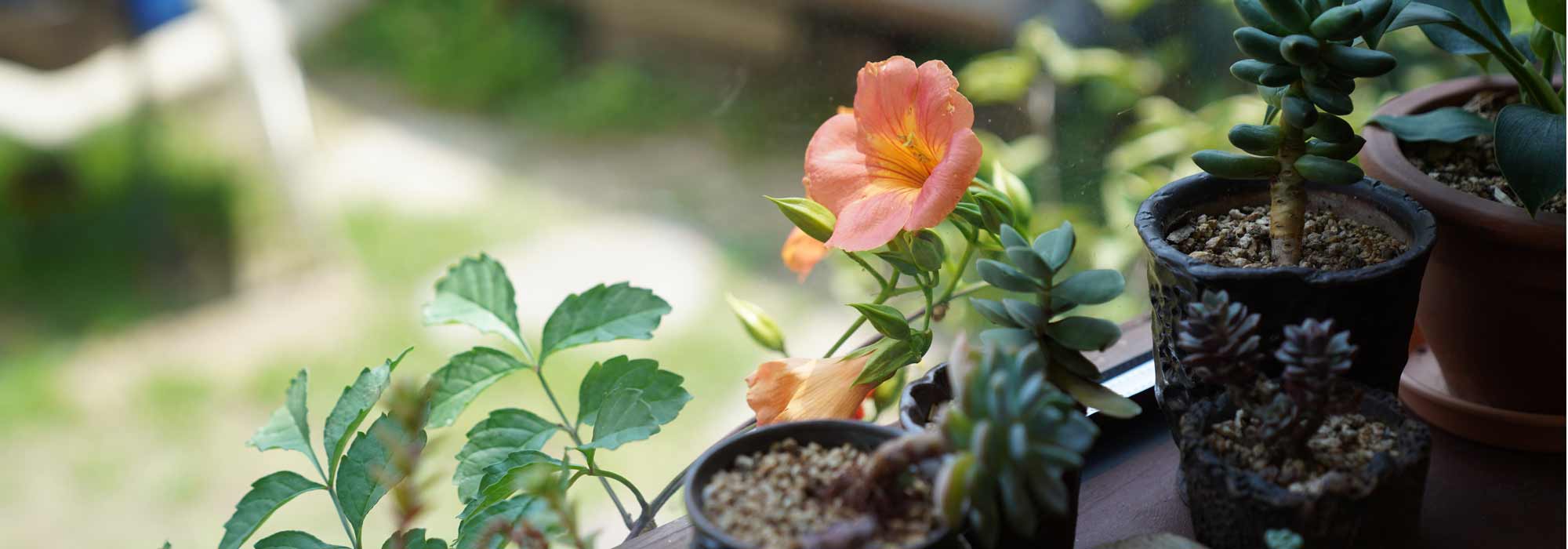
Growing a trumpet vine in a pot
Succeeding it on the balcony or terrace
Contents
Trumpet vine is a climbing plant highly valued for its spectacular and abundant trumpet-shaped flowering, featuring vibrant colours that vary by species (red, orange, yellow, pink…). The flowers last throughout the summer, enhanced by lush foliage.
Some varieties of trumpet vine can be grown in pots, much to the delight of urban gardeners and those without large gardens.
Suitable varieties, choice of pot and substrate, watering, pruning, tips for proper support… Here are all our tips for successfully growing a trumpet vine in a pot!
The varieties of bignonia to favour for pot growing
In open ground, the bignonia can quickly reach a height of between 8 and 10 m, which is a disadvantage when potted. On the balcony, growing bignonia is therefore more challenging than in the garden, as it is difficult to acclimatise this large-growing plant in a confined space. The plant can live for three or four years in a pot, but it never fully thrives there, unless you choose bignonia varieties suitable for this context.
We particularly think here of the very compact and hardy bignonia ‘Indian Summer’, as well as hybrid bignonias, such as Campsis x tagliabuana ‘Summer Jazz Fire’. These varieties are much more suitable for small spaces and for growing in large pots. They have been specifically selected for their very limited growth, which does not hinder their exceptional flowering.
Our varieties suitable for pot cultivation

Campsis radicans Indian summer
- Flowering time July to October
- Height at maturity 4 m

Campsis x tagliabuana Summer Jazz Fire
- Flowering time August to October
- Height at maturity 3 m
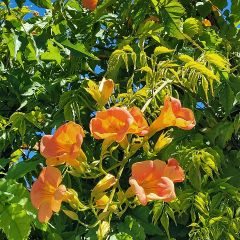
Campsis x tagliabuana Summer Jazz Gold
- Flowering time August to October
- Height at maturity 3 m

Podranea ricasoliana
- Flowering time October to December
- Height at maturity 7,50 m

Pandorea jasminoïdes Rosea - Bower Vine
- Flowering time July to October
- Height at maturity 6 m
Read also
Bignonia: planting, pruning, propagatingHow to grow a trumpet vine in a pot?
To thrive and brighten up your balcony or terrace, the bignonia should be grown in a large container, filled with rich, well-draining substrate, and placed in a sunny, sheltered location away from the wind.
Choosing the pot
The bignonia can be grown in a large pot with a minimum diameter of 30 cm, or in a tall planter. Terracotta remains the preferred material, as it is more breathable, provided that your balcony can support its weight.
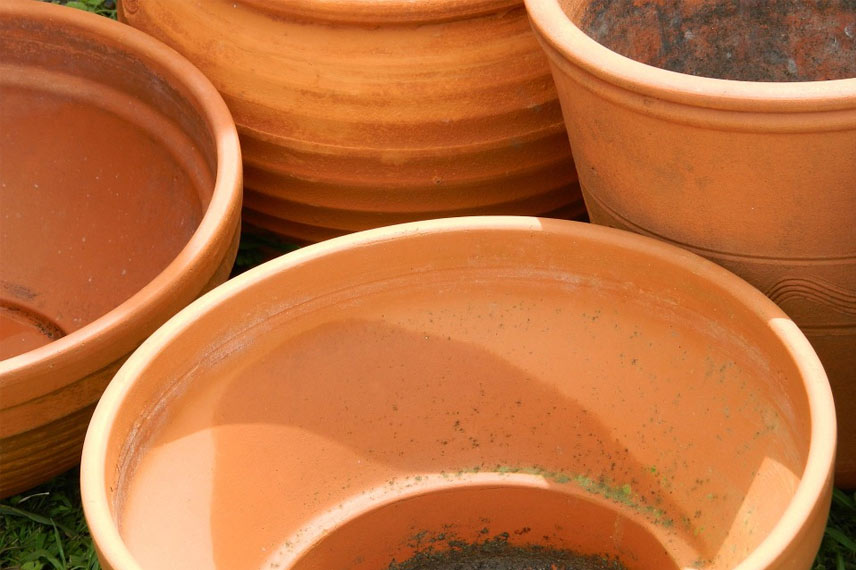
What substrate for a potted Bignonia?
The bignonia thrives best in substrates that are rich, fresh, and especially well-draining. It is sensitive to heavy, compact soils where moisture can stagnate.
So opt for a well-draining mix of leaf mould, garden soil, and coarse sand. Also, ensure a good layer of gravel or clay balls at the bottom of the pot.
Planting
- Place a good layer of clay balls at the bottom of the pot.
- Partially fill the container with your substrate.
- Position the bignonia in the centre of the container.
- Fill in without compacting with the remaining substrate.
- Water generously to encourage rooting.
- Mulch the surface of the pot.
- Place the potted bignonia in a sunny spot, sheltered from drafts.
Discover other Campsis - Trumpet Creeper
View all →Available in 0 sizes
Available in 0 sizes
Available in 1 sizes
Available in 2 sizes
Available in 1 sizes
Available in 3 sizes
Available in 1 sizes
Available in 1 sizes
Available in 1 sizes
Available in 2 sizes
Caring for a trumpet vine in a pot
As we have seen, the bignonia needs to be planted in a sheltered spot away from winds, and it should receive plenty of natural light.
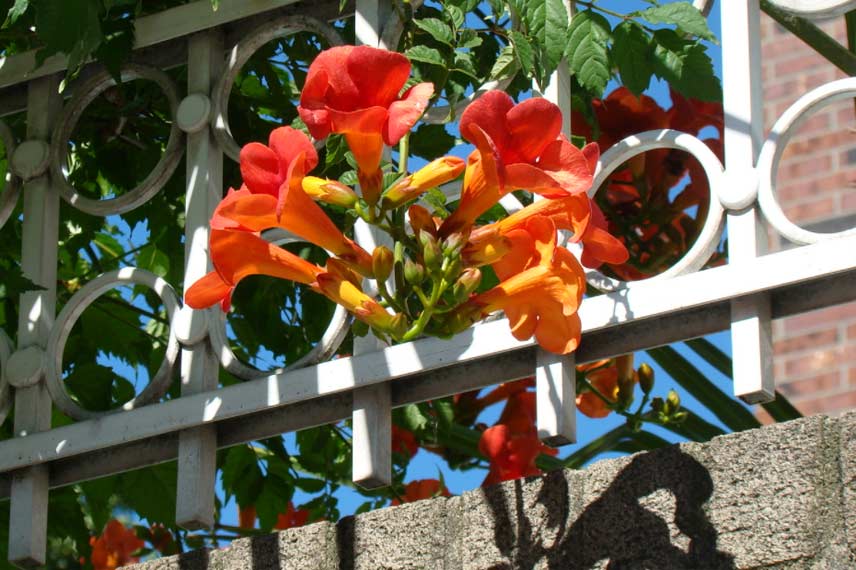
Bignonia on the balcony © Wendy Cutler – Flickr
Mulch generously around the base of the bignonia, even when it is grown in a pot. Indeed, mulching helps to maintain the moisture of the substrate (which tends to dry out more quickly in pots), and it provides a blanket against the cold during winter.
Hardy varieties can be kept outdoors with this protection during winter. However, place potted plants under frost protection in case of severe frosts in colder regions. Pandorea grown in pots are not hardy and should therefore be automatically stored under cover during the winter months.
Staking
Even in a pot, the bignonia needs a trellis or support to guide its initial growth. Here’s how to train a bignonia in a pot:
- Climbing varieties (like Indian Summer) climb on their own up walls, facades, pergolas, fences… thanks to their climbing roots. You simply need to guide their first shoots onto the support.
- For dwarf varieties (like Campsis tagliabuana Summer Jazz), guide the young stems onto a trellis. These varieties can also be trained into a small tree. Select the best stem of the bignonia and tie it to a sturdy support, driven deep into the substrate. Then remove the secondary shoots up to the desired height to form a trunk.
Watering and fertilising
The bignonia in a pot requires regular watering and fertilising during spring. Opt for a flowering plant fertiliser, such as rose fertiliser with slow release.
In summer, the bignonia planted in a pot needs to have its roots kept cool, but its top in the sun. During the warm season, maintain its substrate moist by watering regularly.
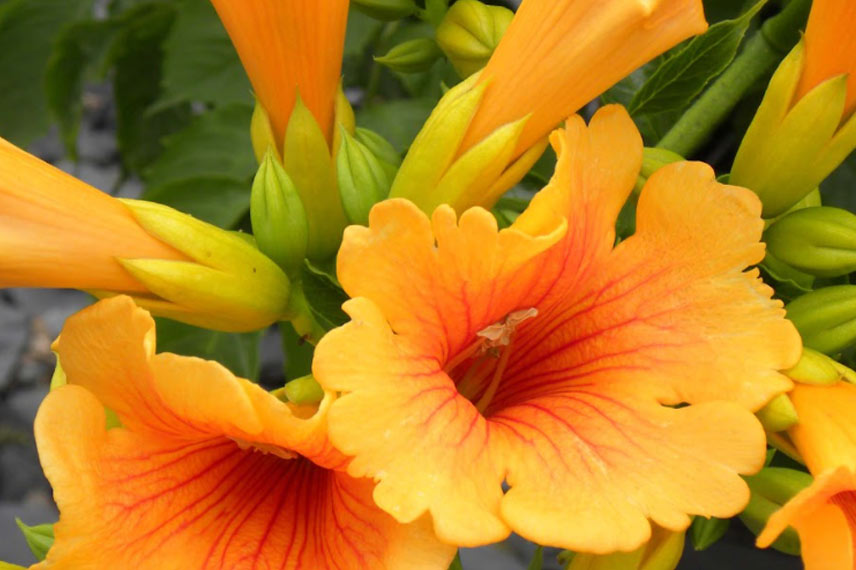 Campsis x tagliabuana ‘Summer Jazz Fire’
Campsis x tagliabuana ‘Summer Jazz Fire’
Repotting
Repot your bignonias in pots every 3 years, when they start to show signs of exhaustion.
Pruning a Bignonia in a pot
While pruning a bignonia in the ground is not essential, it is better to do this regularly when it is grown in a pot, to control its growth.
Prune your bignonia in a pot before its flowering, that is, at the end of winter, in March.
- Start by removing the tips damaged by the cold during winter (if your potted bignonia is wintered outdoors).
- Prune drastically the shoots that flowered the previous year (to encourage next year’s flowering).
- Be careful to leave a regrowth at the base to avoid bare patches at the bottom.
You can also remove the spent shoots in September, as well as the oldest shoots, which you will easily recognise by their cracked bark.
- Subscribe!
- Contents
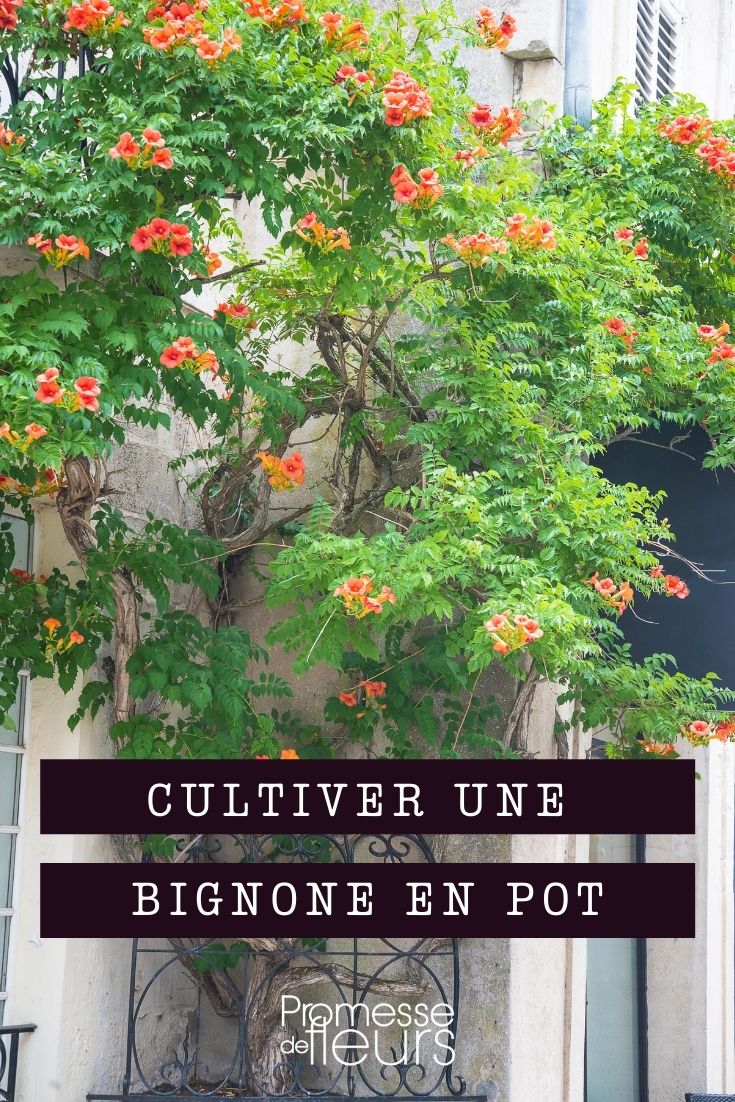































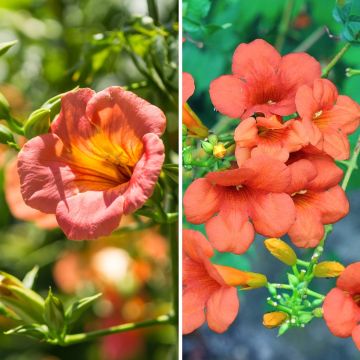

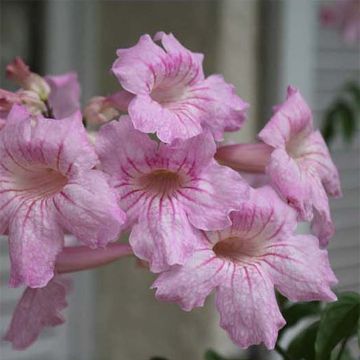
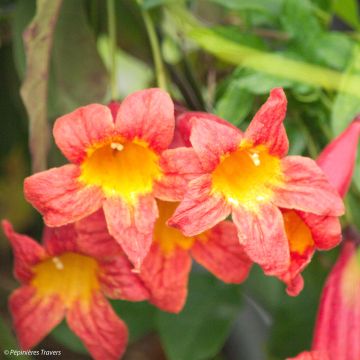
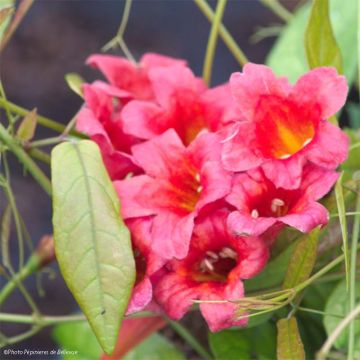


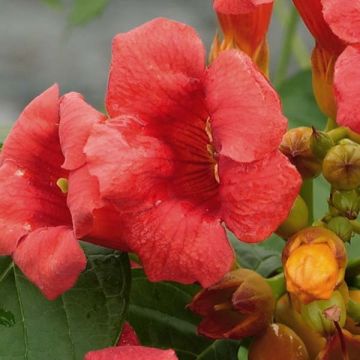
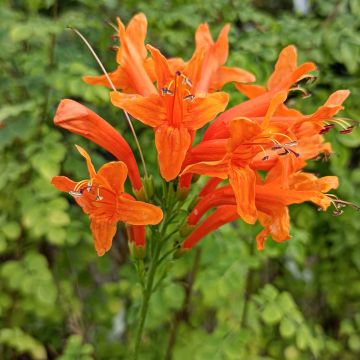

Comments